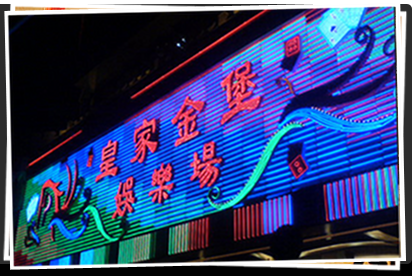The latest government statistics show visitor arrivals for the first two months of the year grew just 3.3% over last year. We are not yet ready to ask all those analysts who predicted this would be the year of the mass market to set a pace similar to the VIP market what they have done with their models; partly because the much-heralded Guangzhou-Zhuhai railway line has not yet been connected to Gongbei, and is supposed to be by the middle of the year (upon which many of their models rest), and partly because year-on-year growth in mass gaming floor revenues rose in those two months at a much faster YoY clip than arrivals (nearly 28%). But we are going to start asking the question of where growth in the mass market is likely to come from on a scale commensurate to keep justifying the buildout of new properties on Cotai.
Indeed, we are six weeks away from the opening of a new megaresort in Cotai, one that will have the most splendiferous mass floor Macau has ever seen. Management would be foolish not to be targeting at least HK$400m a month in revenues from that floor, and we know this is not a foolish casino management team, led by the evergreen Dennis Andreaci, who opened the Sands and Venetian. Now, put aside those YoY mass gaming numbers mentioned previously, and look at the growth of mass gaming revenues MoM over the past four months since last October’s record: November -8.55%; December +8.08%; January +5.47%; February -0.14%. This is not what one would call a market going from strength to strength.
Granted, Galaxy Macau will be opening in one of the seasonally strongest months of the year. In 2010, May’s mass revenues were up more than 10% over April’s. But Galaxy Macau is opening mid-month, after the crucial Golden Week is finished, and heading into one of the weakest months of the year, June, which last year saw mass revenues drop 10% over May.
Our point, dear readers, is that unless Galaxy Macau wants to commandeer China’s national railway and aviation networks to bring in another 100,000 or so mainland Chinese from beyond Guangdong for their starting day, they are most likely going to be opening into a saturated mass market.
Have no doubt, however, that Galaxy Macau’s mass floors will be packed on opening day, and probably for a few weeks and possibly months thereafter. Which begs the obvious question: whose mass floors are not going to be quite as packed as they were before?
Apologies, we digress. The more important question raised at the beginning of this ramble needs to be addressed. And indeed, we are not pessimists. We see an infrastructure buildout coming in the Pearl River Delta and its hinterland that will significantly improve accessibility to Macau over the next five years. That should at least increase repeat visitation. And we do see rising wages and expenditure by average Chinese consumers as reason to believe mass gaming revenues will continue to outpace growth in visitor arrivals in the longer term. Given the slowdown in building on Cotai, plus the table cap, we don’t see cause for concern about those mass floors beyond 2016.
However, 2016 is not now. We also see no reason to put on the rose-tinted glasses so beloved of foreign investors and declare that gaming in Macau should be considered on par with sales of home appliances across China. Gaming across China, perhaps. But not gaming in Macau. Infrastructure improvements notwithstanding, Macau is still too difficult a place to get to for most mainland Chinese who can always find a good card game in their neighborhood. It’s a big country, and Macau is not Las Vegas, with 100,000 hotel rooms and direct flights to every major city in the country.
Moreover, Macau’s casinos have shown themselves woefully incapable so far of extending their marketing campaigns beyond Guangdong in a meaningful way. And it’s not just because advertising of gaming is banned in China. Only the third-party casinos under the SJM umbrella appear to have the kind of ethnicity-charged and commission-based networks that can scour gaming dollars from as far away as Zhejiang (providing more visitors than Japan or Korea in February). This goes a long way to explaining why SJM’s mass revenue growth outpaced Sands China’s last year. Once Cotai has been fully built out, and there are more attractions designed to keep visitors from further afield here for longer stays, that may change. Maybe. Copyright and use with permission of IntelMacau





















